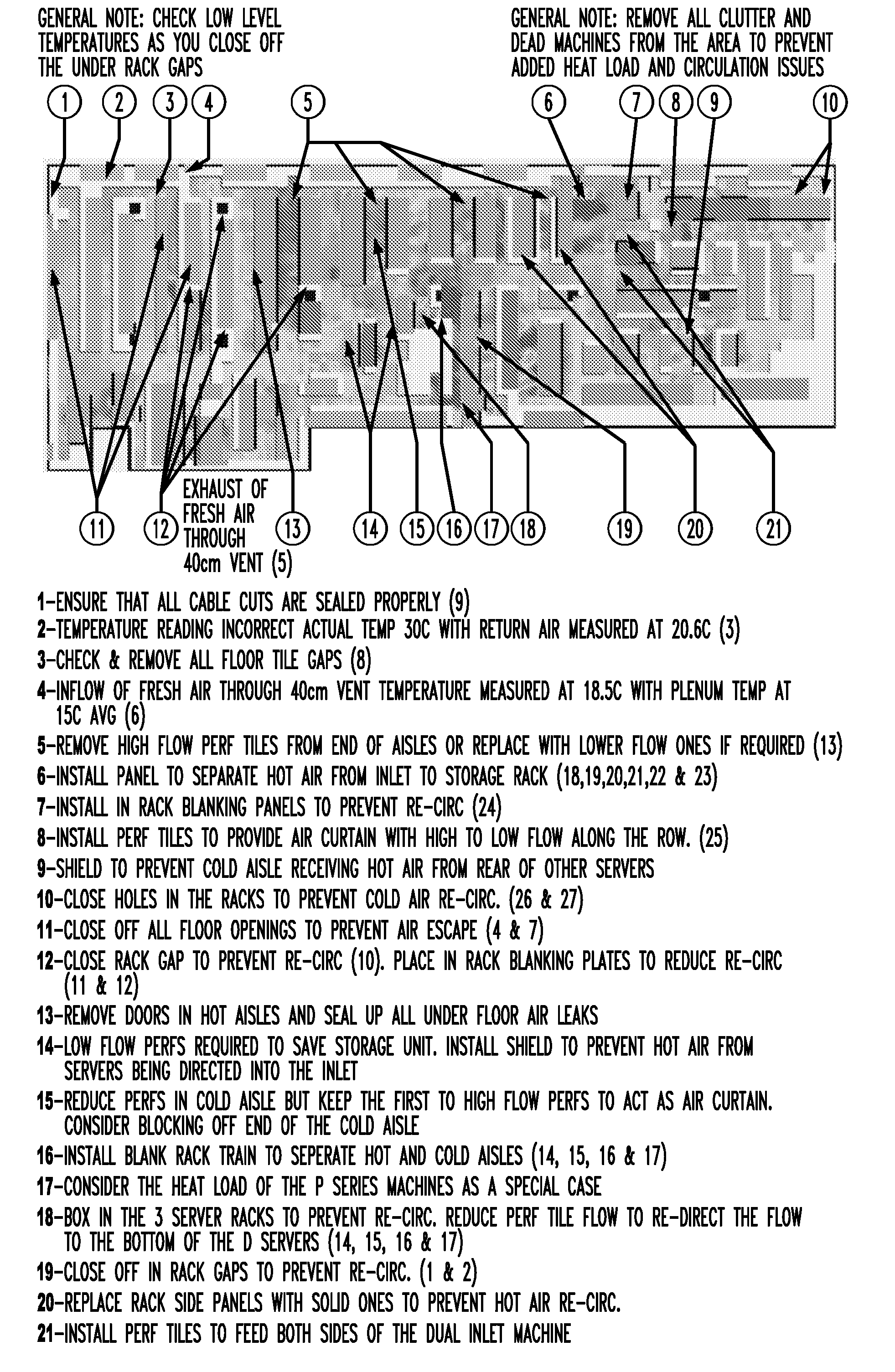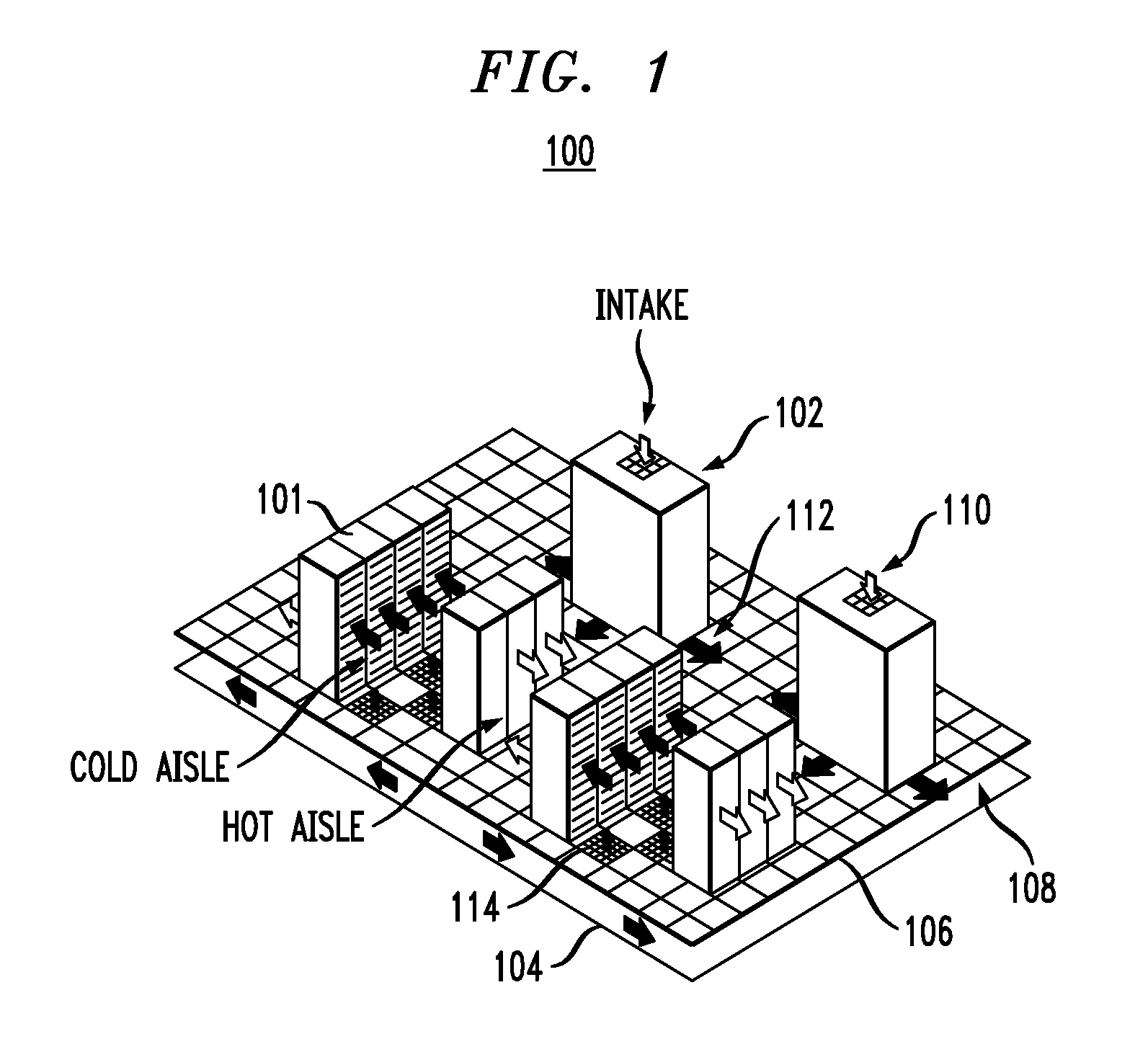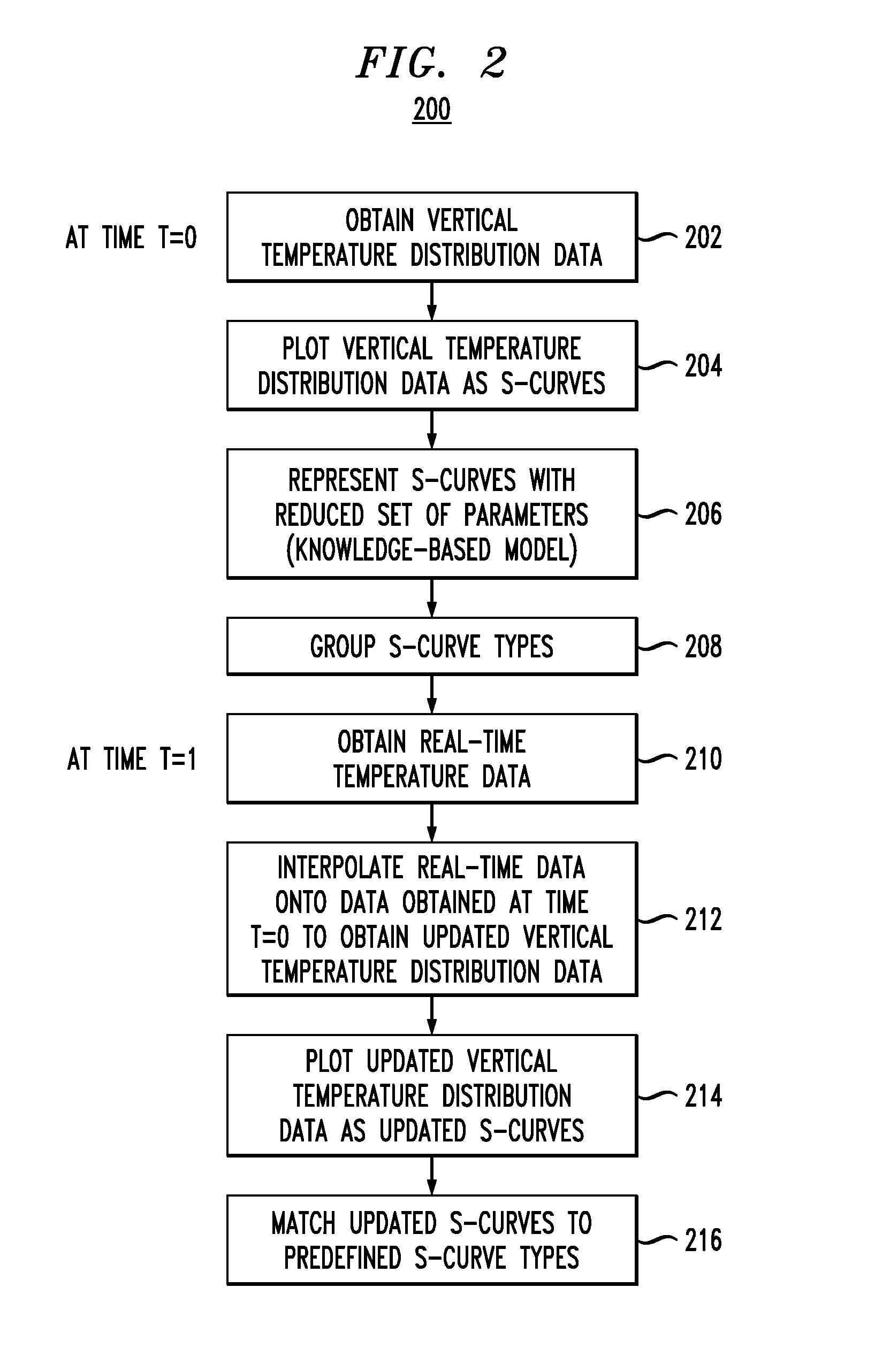Knowledge-Based Models for Data Centers
- Summary
- Abstract
- Description
- Claims
- Application Information
AI Technical Summary
Benefits of technology
Problems solved by technology
Method used
Image
Examples
Embodiment Construction
[0024]Presented herein are techniques for modeling temperature distributions in a data center. By being able to better understand the thermal conditions in a data center, best energy practices can be implemented thus improving overall energy efficiency. It is notable that while the instant techniques are described in the context of a data center, the concepts presented herein are generally applicable to temperature distribution analysis in spaces such as buildings, factories (in particular semiconductor factories) or assembly of buildings (cities), as well as in data centers (locations are selected, e.g., based on the heat density, the more heat there is, it is more important to manage the energy).
[0025]FIG. 1 is a diagram illustrating exemplary data center 100. Data center 100 has server racks 101 and a raised-floor cooling system with air conditioning units (ACUs) 102 (which may also be referred to as computer room air conditioners (CRACs)) that take hot air in (typically from abo...
PUM
 Login to View More
Login to View More Abstract
Description
Claims
Application Information
 Login to View More
Login to View More - Generate Ideas
- Intellectual Property
- Life Sciences
- Materials
- Tech Scout
- Unparalleled Data Quality
- Higher Quality Content
- 60% Fewer Hallucinations
Browse by: Latest US Patents, China's latest patents, Technical Efficacy Thesaurus, Application Domain, Technology Topic, Popular Technical Reports.
© 2025 PatSnap. All rights reserved.Legal|Privacy policy|Modern Slavery Act Transparency Statement|Sitemap|About US| Contact US: help@patsnap.com



